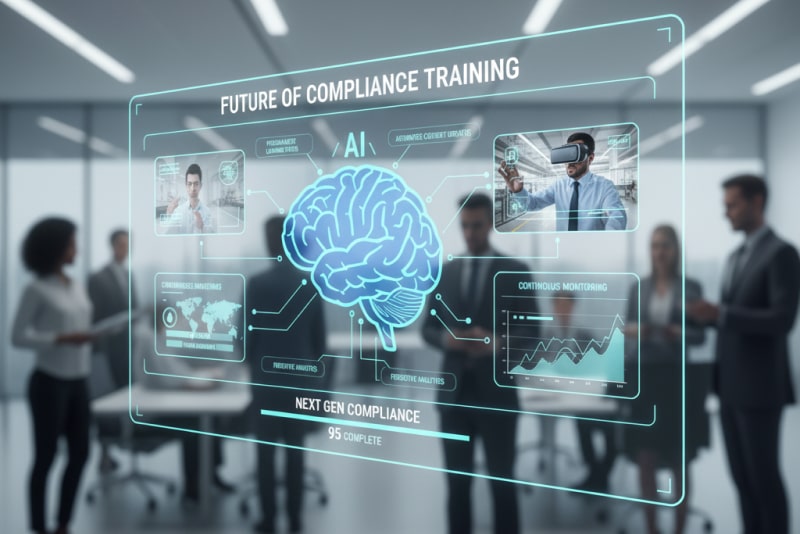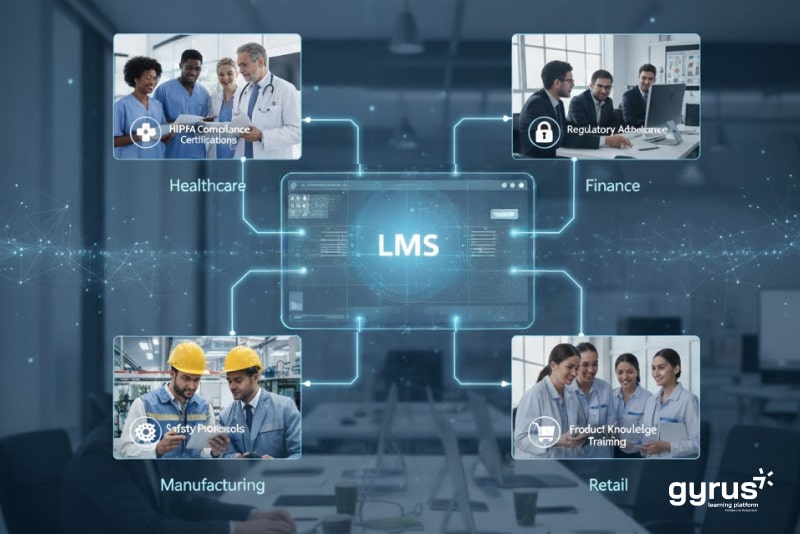The workplace is evolving faster than ever. Roles are shifting, industries are transforming, and the skills we need today may not be enough for tomorrow. As organizations strive to stay ahead, the question isn’t just how we train, but how we prepare for what comes next. Discover how AI in corporate training and development is revolutionizing the workplace.
The Future of Work Is Already Here
By 2030, it’s estimated that 85% of the jobs that will exist haven’t even been invented yet. This isn’t a prediction. It’s a wake-up call. If training strategies remain stuck in 2020, what happens when the roles of 2030 arrive?
The pace of change means the way we train our people can no longer be reactive. We need a forward-looking approach—one built not on routine, but on resilience, relevance, and readiness.
Four Forces Reshaping Learning
Training and development professionals are facing a seismic shift. These four disruptors are driving a fundamental change in how people learn:
- Artificial Intelligence – AI isn’t just automating tasks; it’s redefining the learning experience. From recommending content to creating assessments, AI is turning learning platforms into adaptive, personalized coaches.
- Hybrid Work – Learning must now follow the learner. Whether in the office, remote, or on the move, today’s workforce expects access anywhere and anytime.
- Skill Obsolescence – With the half-life of skills shrinking to just five years, we’re not simply filling knowledge gaps—we’re racing to stay current.
- Shifting Expectations – Learners want training that feels like Netflix: personalized, on-demand, and bite-sized. Anything less, and they’ll disengage.
Together, these forces are reshaping not just learning methods, but learning mindsets.
The Evolution of the LMS
Learning Management Systems (LMSs) have come a long way:
- LMS 1.0 was about content delivery—a digital filing cabinet.
- LMS 2.0 embraced social and mobile learning, making content accessible anytime, anywhere. Click here to learn why social learning is important.
- LMS 3.0 introduced data-driven insights—measuring impact and adapting learning paths.
- LMS 4.0, where we are today, brings in AI-powered intelligence, enabling real-time personalization, proactive upskilling, and predictive training strategies.
But here’s the challenge: many organizations are still using LMSs that resemble that first version—tools built for storage and tracking, not transformation.
Are You Closing the Right Gaps?
Too often, training looks good on paper but misses the mark in practice. It’s well-organized, well-documented—and completely irrelevant.
This disconnect points to a deeper issue: we’re delivering content, but not context. We’re tracking completions, but not capabilities. We’re checking boxes, but not building confidence.
What’s needed isn’t more training. It’s smarter training—targeted, adaptive, and aligned with evolving job roles. The goal is to bridge the gap between what your people know and what they need to do.
AI in Corporate Training and Development
AI in learning and development isn’t about replacing humans. It’s about amplifying their potential. Here’s how:
- Personalized learning journeys tailored to each individual’s role, performance, and preferences.
- Predictive analytics that flag skill gaps before they become business risks.
- Adaptive learning paths that shift as learners grow.
- Workforce analytics that inform smarter decisions about talent development.
Imagine an intelligent system that knows each employee’s strengths and gaps—and recommends the right training at the right time. That’s the power of AI in learning.
From Pushing Content to Pulling Learners
The shift AI brings is both technological and philosophical. We’ve moved from designing training for the average learner to creating learning experiences for each individual. AI pulls learners toward the skills they need—when they need them.
It doesn’t just deliver content. It builds it. In real-time. Aligned to your workforce’s specific and emerging needs.
This is more than evolution—it’s transformation.
The Questions You Should Be Asking
When evaluating your current LMS—or exploring a new one—don’t just ask about features. Ask better questions:
- Can it evolve as fast as your workforce does?
- Does it integrate AI in a meaningful, actionable way?
- Can it support both compliance and innovation?
If the answer to any of these is “no,” your LMS may be holding your people back.
The Stakes Have Never Been Higher
The future of work isn’t waiting. Every day, industries change, expectations shift, and opportunities emerge. To lead, organizations must move beyond box-checking and compliance-only models. They must embrace AI-powered learning that’s proactive, personalized, and performance-driven.
With the right LMS, you don’t just keep up—you get ahead.
Ready to start the conversation? Whether you’re evaluating your current system or exploring what’s next, consider how your LMS is helping (or hindering) your people’s growth. The future won’t wait—and neither should your training strategy.
Want to talk more? Let’s connect.
See Online Learning in Action
Want to understand the real impact of online training? Watch a quick demo of how an LMS streamlines learning for modern teams.





